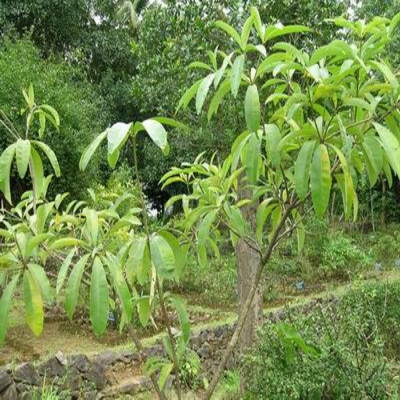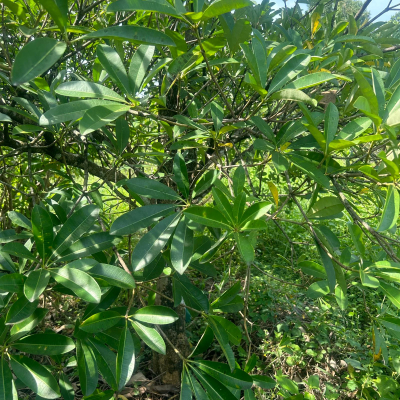Alstonia scholaris (Linn.) R. Br.
Synonyms : Echites scholaris L.
Family : Apocynaceae
Parts Used : Leaf , Bark , Milky exudate
Vernacular Names :-
| English | : | Devil tree |
| Malayalam | : | Ezhilampala |
| Hindi | : | Shaitan ka jat |
| Sanskrit | : | Saptaparnah |
| Assamese | : | Edakalapalai |
| Bengali | : | Chatwan |
| Gujarathi | : | Sathi, Satanna |
| Kannada | : | Janthalla |
| Tamil | : | Elilappalai |
| Telungu | : | Satwin, Saptaparni |
Distribution and habitat: Throughout India especially Western Ghats.
Botany: A large, buttressed evergreen tree, 12-18 m height, bark yellow inside and exudes milky butter latex.
- Leaves: Simple 4-7 in a whorl, 3.8-6.3 cm, oblong-lanceolate or obovate, tapering at the base into a short petiole, petioles 6-13 mm long.
- Flowers: Greenish white or greenish yellow, in compact, umbellate cymes, fragrant. Calyx 2.5-3 mm long, pubescent; corolla tube 8 mm long.
- Fruits: Follicles, 30-60 cm long, in clusters, cylindric.
- Seeds: 8 mm long, flattened with long tuft of brown hairs at each end.
Chemical constituents: Alkaloids- Echitenine, Echitamine, Echitamidine, Ditamine, Picrinine, Picralinol, ψ-akuammigine, ψ- akuammicine.
Uses: Antimalarial, hypotensive, anthelmintic
- Bark- Diseases of heart and blood, catarrhal fever, laxative, abdominal disorders
- Leaves- Ulcer (tender leaves), beri- beri, liver congestion
- Latex- Ulcers, sores, tumours, rheumatic pain
Formulations: Saptachaladi taila
Agro technology
Climate and soil: It prefers well drained soil and requires good amount of moisture in soil for growth. It is seen in almost all types of soils. The annual rainfall requirement of the plant is 2000 mm.
Propagation: Cuttings and seeds
Manures and fertilizers: 100 g N and 50 g each of P and K may be supplied to one year old seedling in July month. Addition of FYM or well decomposed cowdung must be done in October-November period.


